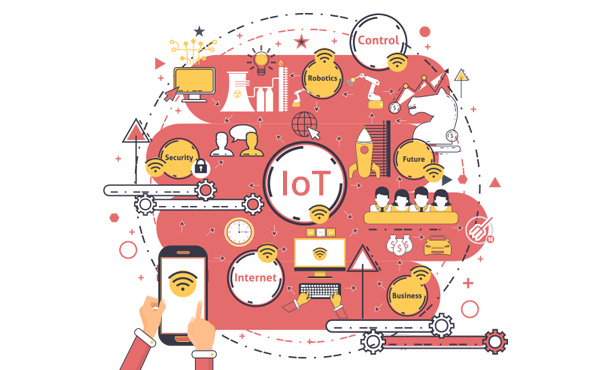Introduction
As day-to-day services across the board become more accessible to a larger section of the population, it becomes more important that the work processes of the industries concerned be streamlined and monitored closely at every level. One such industry that requires prompt action and minute-level monitoring is oil and gas. And, the task of keeping checks on all the crucial aspects of the industry from a single point of control can be done by what is known as the Internet of Things (IoT).
IoT gets a group of devices on a single network in order to track, share information, and remotely control the connected devices. The point of control could be a software, network, or sensor. Home automation, intelligent transportation, energy management, and such other technological advancements are a reality today only because of IoT, which is man’s gift to man. Be it home or office security, energy management, waste management, or water management, there is almost nothing that IoT cannot do to help take prompt actions and mitigate problems and inconveniences.
IoT for Gas Management
Oil and gas is an almost indispensable sector; one that bears the prime responsibility of managing and supplying one of the most important natural resources to households and other industries. Live tracking and prompt action in this sector would imply looking into aspects such as getting gas pipelines on a single network, managing gas inventory, quickly detecting leaks and accidents, sending out signals and alarms in case of emergencies, and dealing with scarcity of supply. Clearly, time and safety are of the essence in the oil and gas industry, and it is only with IoT that the pressing need of close and careful monitoring can be done.
One of the major impediments that has already hit industries and households is the global scarcity of oil and gas, and, undoubtedly, the resultant price rise. In this scenario, lack of a proper gas-management system only aids wastage and unbalanced distribution of this limited resource. The situation is aggravated by accidents that are caused by carelessness and anomalies that are not attended to in time, like gas leaks. To address these issues, the oil and gas industry requires a system that ensures not only fair distribution, but also optimum utilization of manpower and quick action at the time of need. This kind of system is exactly what IoT provides. Be it for the upstream, midstream, or downstream industry, timely data sharing, live tracking for updates, immediate response to grievances and accidents, and prompt decision-making will go a long way in reducing wastage, ensuring safety, and bringing about a balance between demand and supply.
IoT can create a common platform for keeping a check on demands by companies and households, availability of gas in these places, and current requirements so as to make decisions like setting out to deal with emergencies and sending supplies in case of shortages. Individual consumers and companies, too, can keep a personal check on the stock available with them and for any issues that could cost them dearly. A streamlined network that offers all those concerned access to such critical information will not only help in gas conservation and supply, but also prevent misuse, overuse, and overcharge. IoT can, thus, create a win-win environment for suppliers and consumers of gas.
What is Iksula’s role here?
When it comes to regularizing the goings-on in any industry, transparency is of utmost importance. In the oil and gas industry, too, regularization of work processes from the upstream to downstream levels calls for streamlining of inventory management, maintaining demand-supply balance, and being aware of consumption across different areas. Here is where Iksula comes into the picture.
Iksula can build a dashboard that will be specific to an area and common for all the gas companies operating there. This dashboard will provide crucial information like average consumption per day in the area so that the companies can make estimates on the cost and the supply needed. The companies could also create a gas-management schedule for delivery to the various locations at pre-determined dates, so they can stock up well in advance and avoid last-minute delivery clashes.
Similarly, for consumers, Iksula can create an app that will help them keep a check on their usage, make cost estimates, get updates regarding supply and other issues, know how much gas is available in their tanks, and place orders as soon as they know there is a shortage. The app will also record the consumers’ usage history for quick reference anytime later—this feature will be of help during discrepancies regarding usage and payments. Additionally, the app can be used to set reminders for refills, which the consumers shall receive through push notifications or e-mails on their mobile devices.
Both the dashboard and the app can be in a multi-lingual format so as to be user-friendly and have a wider reach.
Here’s a Case Study on a recent project we have done on IoT for Gas Management: https://old.iksula.brandfanatics.io/work/nube/
Conclusion
Management of a depleting natural resource in a disconnected and choppy manner cannot hold the fort for long. Now is the time to address all the issues that face the oil and gas industry—right from the point of excavation to the consumer level. If the answers lie in the Internet of Things, it is only wise that we turn to it now before it’s too late.





